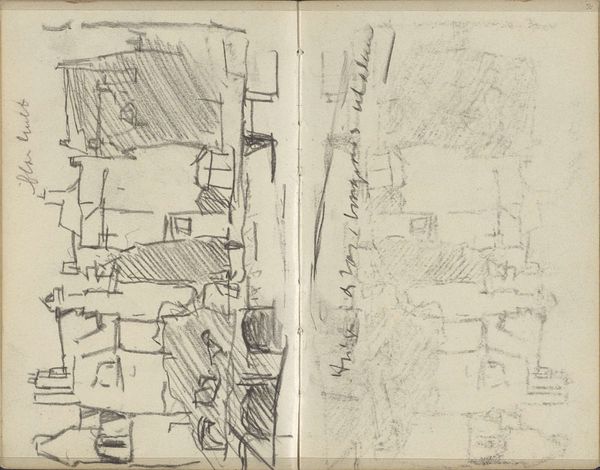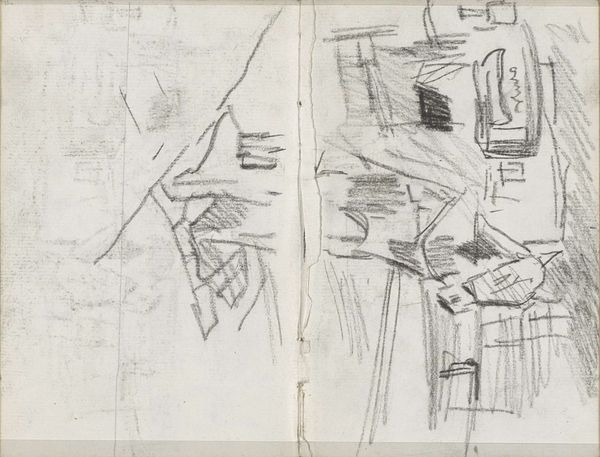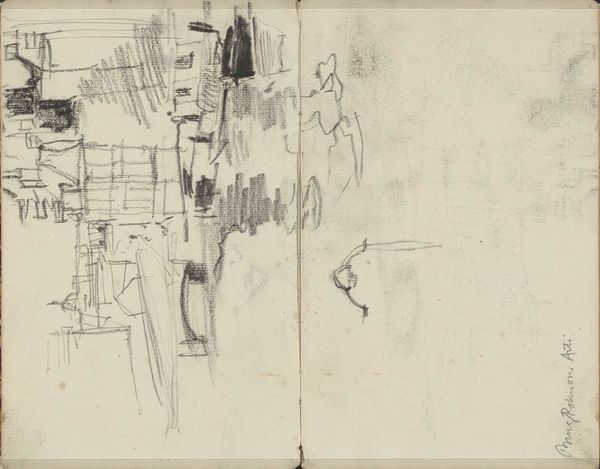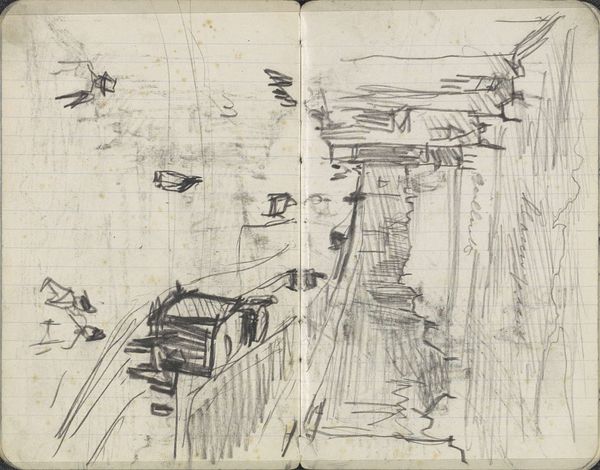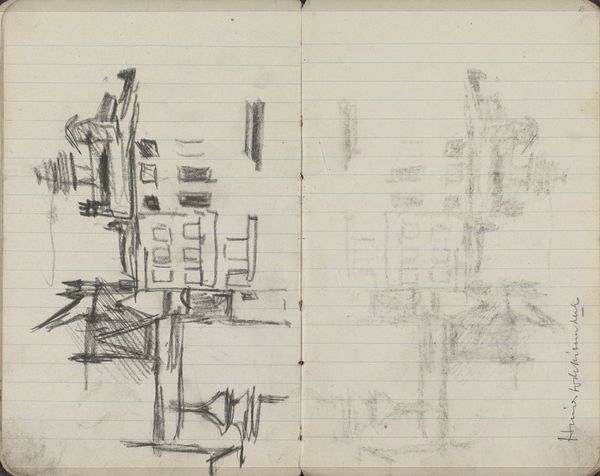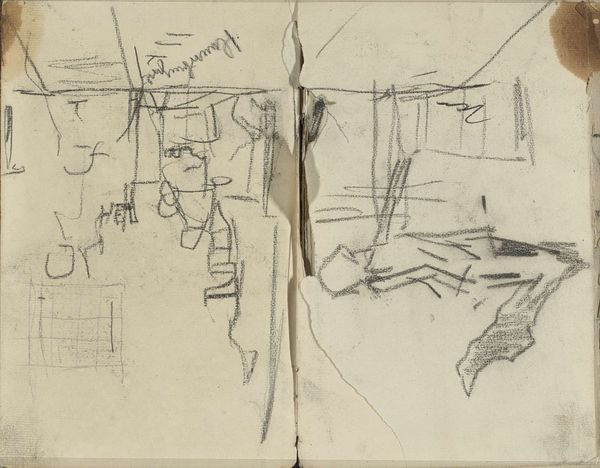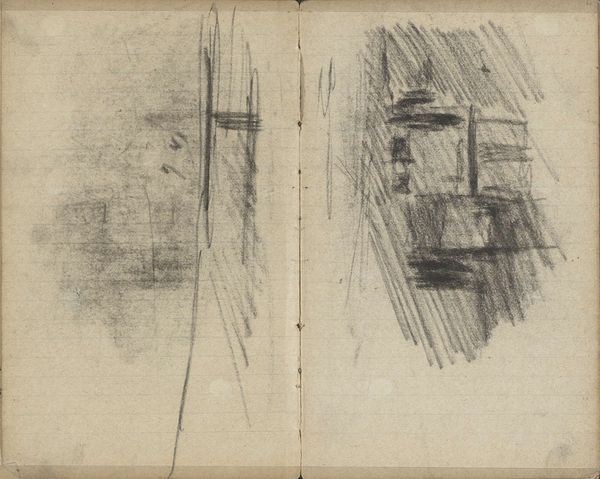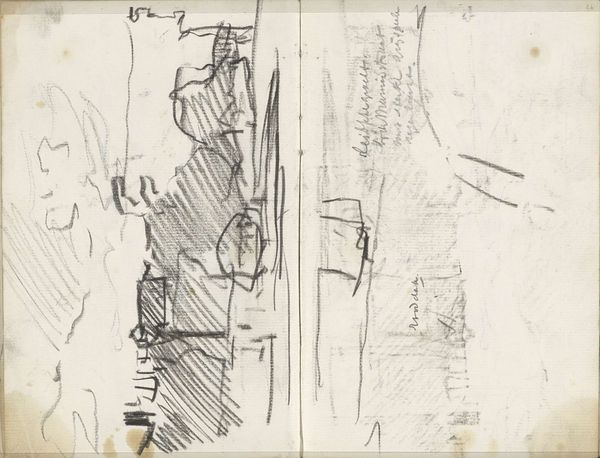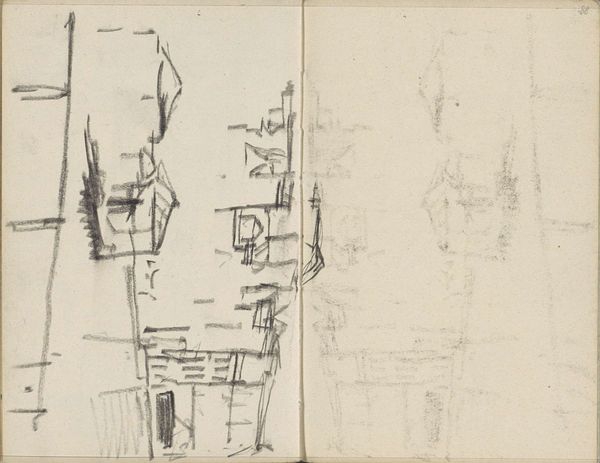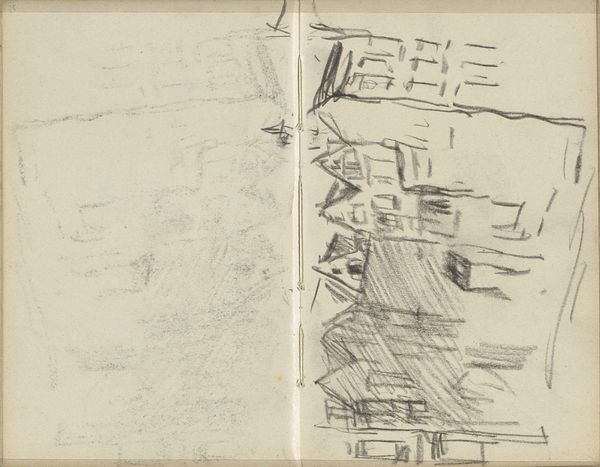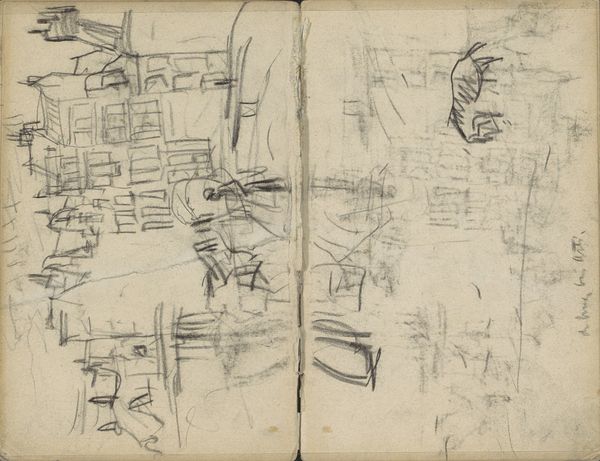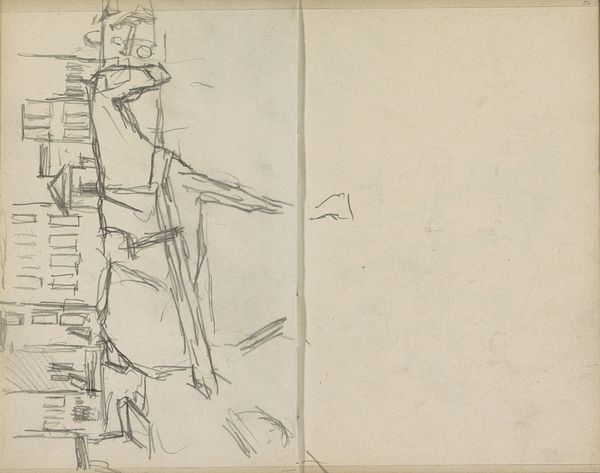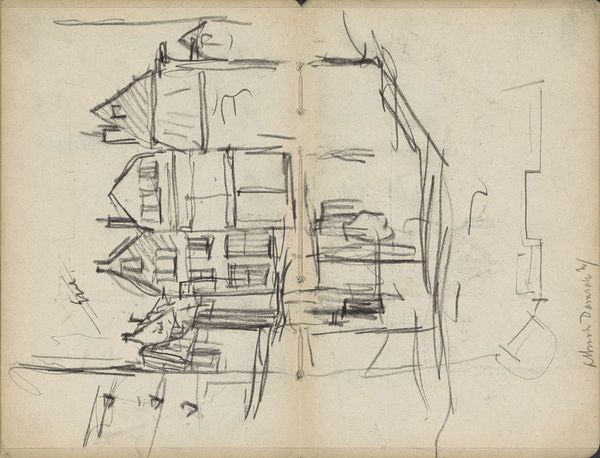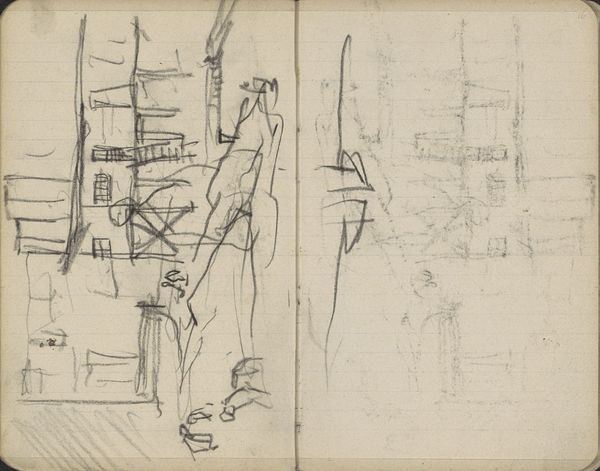
Gezicht op de Herengracht te Amsterdam ter hoogte van de Beulingstraat 1895 - 1898
0:00
0:00
Copyright: Rijks Museum: Open Domain
Curator: This drawing, dating from 1895-1898, captures a fleeting glimpse of the Herengracht in Amsterdam. George Hendrik Breitner rendered it using pencil. It is housed in the Rijksmuseum collection. Editor: My first impression is almost musical; the hurried lines create a vibrating, urban hum. Curator: Exactly! Breitner was known for his candid, almost journalistic approach. Look closely – you can almost feel the bustling city life captured here with the immediacy of a snapshot. What materials did Breitner have easy access to and how did this influence production of his street views? Editor: He was dedicated to showing modern life without idealization, embracing the grit and grime of the industrializing city. I mean, here it's literally the lines on paper itself mimicking the crowded space of the canals of Amsterdam. You see how the Beulingstraat, almost looks unfinished because its lines remain a part of the background lined sketchbook paper. The urban sketches were less about idealized scenes, and more of quick, first glance kind of images made available by way of easily accessed material. How might this relate to consumerism for images for local Amsterdammers to enjoy? Curator: That relates back to public demand. Urban growth during the Industrial Revolution influenced his art—but so did a new consumer class and his dealer. Consider who purchased these images and how they circulated. The drawing comes off as fragmented and incomplete to modern eyes, yet this fragment might appeal more to art patrons searching for raw authenticity than it does to an average citizen. Editor: It makes one consider how class affected urban development. Did Breitner engage a critique about social circumstances to get notoriety and patronage or to highlight important moments that otherwise went unnoticed? Curator: He operated within existing frameworks. Museums displayed such drawings, elevating both Breitner’s status and defining “Dutch life.” A delicate negotiation between critiquing and benefiting from the art system, isn't it? Editor: It truly is. I see it less as a formal portrait of a place, and more of an emotional trace of a city undergoing incredible change. Curator: Yes. And Breitner, a shrewd participant in that changing landscape. Editor: Something that sketches in general lend itself to so well; fleeting views for the everyday passerby to capture and enjoy.
Comments
No comments
Be the first to comment and join the conversation on the ultimate creative platform.
